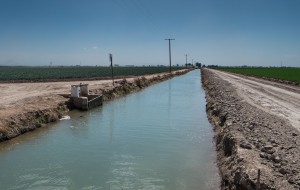The Imperial Irrigation District’s board tomorrow will consider an expanded agreement with the Metropolitan Water District of Southern California that would provide additional flexibility for water conservation in the big desert agricultural district and move water to meet near term drought response needs in the region’s coastal cities.
The deal uses the “Intentionally Created Surplus” framework established in the 2007 Colorado River operating rules. ICS was a major policy innovation designed to overcome the “use it or lose it” principles baked into the old “Law of the River” operating rules. It allows water users to conserve and bank water without losing it. But the rules as written in 2007 have the feel of an experimental program, with a lot of constraints. Imperial, the largest Colorado River water user with farms spread across more than 400,000 acres of desert adjoining the Salton Sea, has long wanted the ability to expand its ability to use the mechanism beyond the small amount of ICS they were permitted under the 2007 rules.The new IID-MWD agreement would allow Imperial to do just that, expanding the amount of ICS it is permitted to do in part by “storing” conserved water in MWD’s system. This would have the practical effect of moving water over to Met this year, to help meet the current year’s extreme shortfalls, with the promise of water payback at a future date.
From IID Colorado River Resources Manager Tina Shields’ memo to the board, here are the basic terms of the deal (click on the embedded bit to see Shields’ full report and the agreement itself):
This might sound clumsy, but it’s a great example of how mutually beneficial agreements can be crafted to conserve and share water across institutional boundaries in this polycentric “no one’s in charge” Colorado River governance structure, and how it’s not as simple as just conserving water. You’ve got to get the institutional plumbing built, which is every bit as important as the physical plumbing.
It’s also an example of the iterative learning involved in these arrangements. Following the 2007 agreement that created ICS, people and institutions learned how to use it, and are now expanding its scope incrementally.

